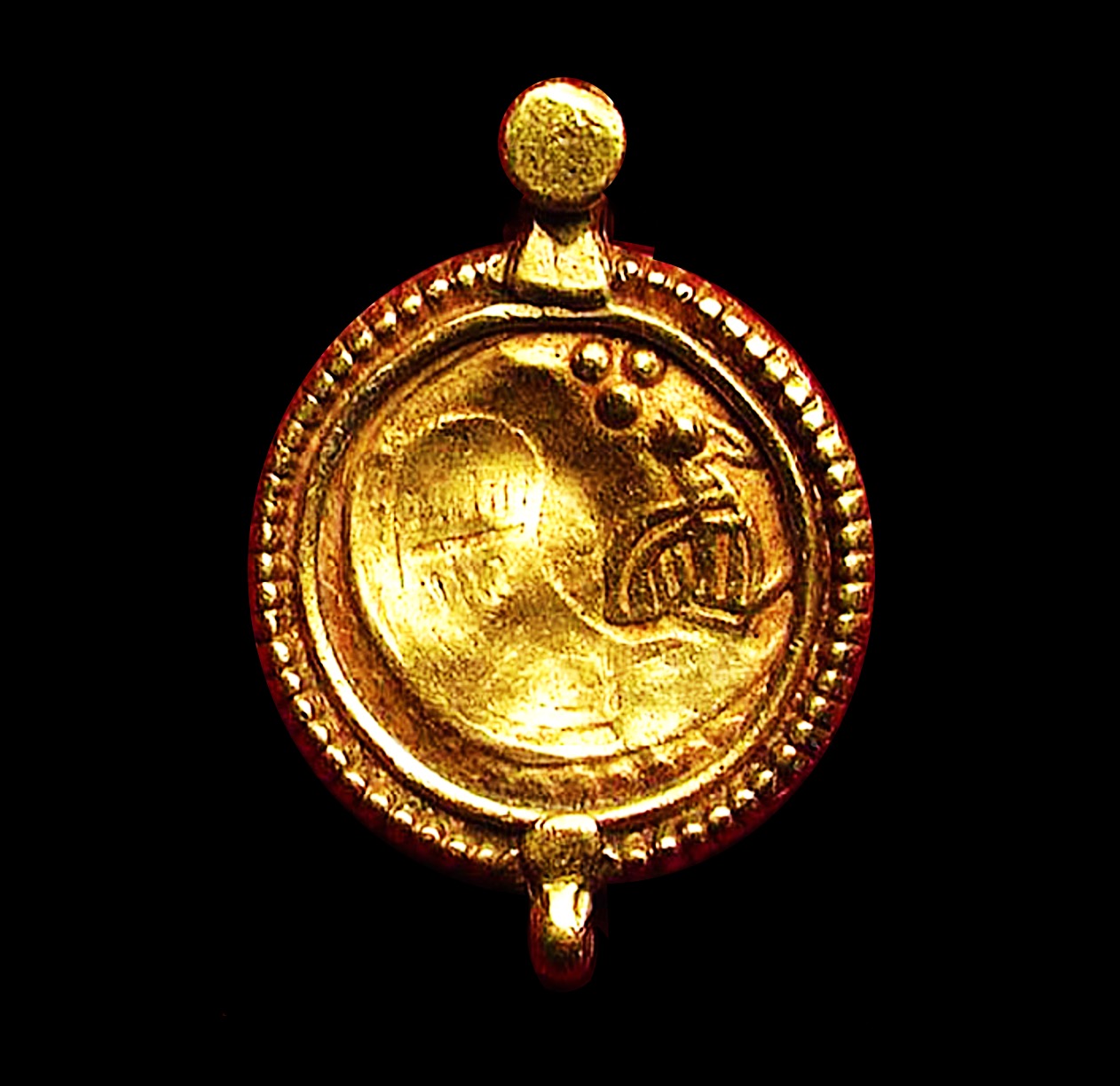

Title: Ancient Designer Artifact Sasanian Jewelry Gold Pendant
Shipping: $29.00
Artist: N/A
Period: Antiquity
History: Ancient Art
Origin: Middle East > Iran
Condition: Very Good
Item Date: N/A
Item ID: 454
This is an incredibly rare piece of Persian jewelry. A SASANIAN GOLD PENDANT, ca. 4th-6th century AD. The circular pendant with loops on top and bottom and the body is ornamented with a peacock done in repousse technique within a beaded border. 24 mm. Very rare. Excellent condition and wearable. The Sasanian Empire was a major political and cultural power in ancient Persia, lasting from the 3rd century CE to the 7th century CE. During this time, the Sasanians developed a unique and sophisticated style of metalwork, including jewelry. Sasanian jewelry was typically made of gold and silver, and often featured intricate designs with motifs such as animals, monsters, and geometric patterns. The jewelry was highly valued for its beauty and craftsmanship, and was often worn by royalty and members of the upper classes. Sasanian jewelry has been discovered in archaeological sites and in private collections, and some examples can be found in museums around the world. The intricate designs and skilled craftsmanship of Sasanian jewelry continues to be admired by art historians and jewelry enthusiasts today.
The Sasanian Empire was known for its skilled artisans, who produced a wide range of decorative and functional objects, including metalwork, ceramics, textiles, and architecture. The metalworkers of the Sasanian Empire were particularly renowned for their skill in working with gold and silver. They produced a wide range of objects, including jewelry, bowls, plates, and incense burners. These objects were often decorated with intricate designs featuring animals, monsters, and geometric patterns. Ceramic artisans of the Sasanian Empire created a wide range of pottery, including bowls, plates, and jars. They were known for their use of bright colors and intricate designs, which included geometric patterns, animals, and floral motifs. Textile production was also an important industry in the Sasanian Empire, and textiles were used for clothing, hangings, and other decorative items. Sasanian textiles were known for their fine quality, intricate designs, and the use of expensive materials like silk. Architecture during the Sasanian era was also a significant aspect, with monumental structures such as palaces, fire temples, and bridges that were known for their grandeur and intricate decoration. The empire's artisans were heavily influenced by the ancient Achaemenid Persian Empire, and many of their designs, motifs, and techniques were inherited from it. In summary, the Sasanian Empire was known for its skilled artisans who produced a wide range of decorative and functional objects such as metalwork, ceramics, textiles, and architecture. Their work was known for its intricate designs, fine quality and the use of expensive materials.